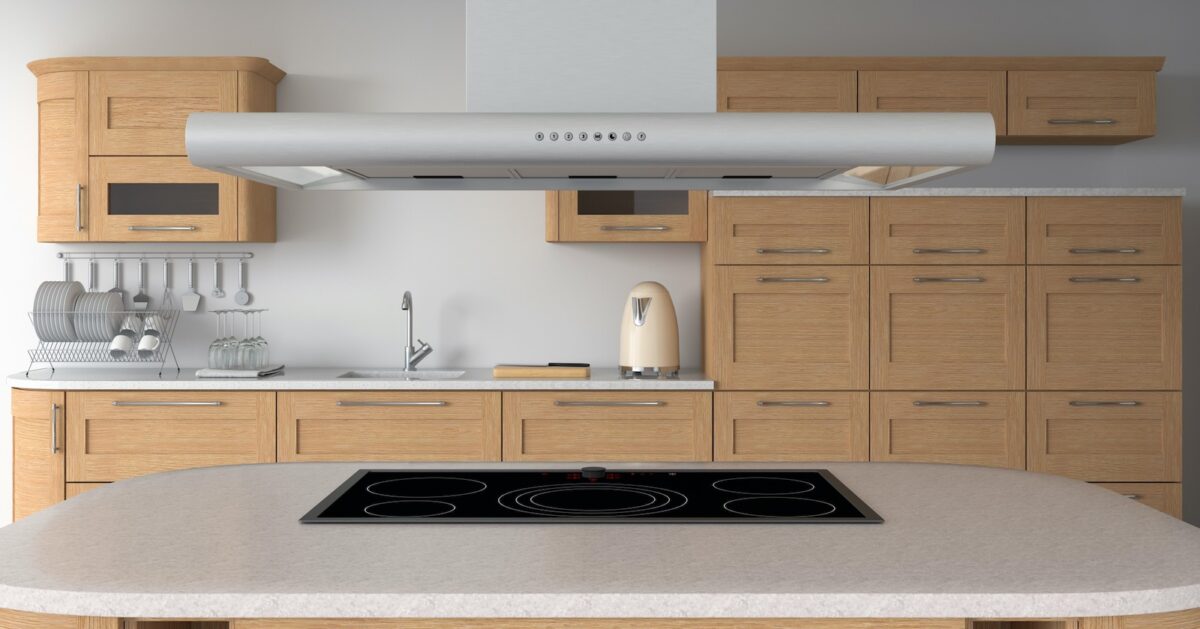
Historically, gas has always been cheaper than electricity to power a home. This is why it’s so popular in residential properties across the US. Its low price and plentiful supply have an appeal that’s hard to beat.
Despite the lower prices, though, gas has its drawbacks. In the coming years, we will be seeing increasing issues with gas as a power supply. These problems have got many people thinking about transitioning away from gas and switching to 100% electricity.
If you have gas in your home, it may not have even occurred to you to go all-electric. If you’re planning home renovations, however, it’s important that you understand what’s going on with gas so you can decide whether or not you want to incorporate plans to convert to an all-electric home. This article tells all, so read on.
Why Should You Go All-Electric?
Gas is becoming unreliable as a power source. Recent soaring prices mean it may not be the most affordable option for much longer. Supplies are dwindling fast and it is estimated that the world will run out of natural gas by 2060, which is not so far away.
Gas is also a fossil fuel and releases carbon into the atmosphere when burned. This, of course, contributes to the acceleration of climate change. Not so great if you want to play a part in preserving the planet.
Going all-electric allows you to choose a supplier that gets some or all of its electricity from renewable sources. The more demand there is for this, the more renewable energy sources will be established, helping fight climate change. You are also future-proofing your home for when the inevitable happens and the natural gas reserves run dry.
What Does the Home Electrification Process Entail?
In the simplest terms, converting to an electric-only house involves removing natural gas appliances such as the stove, water heater, furnace, and fireplace and replacing them with electric versions.
This can involve opening cavities in the walls to access wiring and pipework to remove it. Often, the electricity system will need to be adapted and upgraded to deal with the increased use.
What Are the Benefits of Going All-Electric?
All-electric homes carry plenty of benefits. If you’re on the fence over when it’s worth it, check out why an all-electric house vs. gas is better.
Greater Energy Efficiency
Electrical appliances are far more efficient than their gas-powered counterparts meaning they cost less to run. They tend to be more powerful, too, so you can use less power to run them compared to the gas versions.
Even though gas is cheaper than electricity, you could find that this increased efficiency gives you lower bills than when you used gas.
Increased Home Value
New homes are now being built with no gas appliances and are 100% electric. This should indicate that this is what home buyers are looking for. Those searching to buy a home are far more likely to choose an all-electric home vs gas home because they don’t want to replace the gas appliances later down the line.
We mentioned future-proofing earlier in the article. An all-electric house for sale offers this to potential buyers. Thus, it adds value when you do decide to sell.
Reduce Carbon Footprint
Everyone needs to move away from fossil fuels. Converting to an electric home will allow you to choose electricity from renewable sources. Plus, since you won’t be burning gas anymore, you’ll be greatly reducing your carbon footprint.
Improved Air Quality
Although gas is generally considered safe, it still throws out its share of pollutants into the home: carbon monoxide, nitrogen dioxide, and other particulates. Carbon monoxide can be deadly when inhaled in large quantities and is the main danger of using gas.
The electric home won’t have any of these pollutants, so the air quality may be much higher. Plus, you won’t have to worry about carbon monoxide poisoning.
More Comfortable Home Environment
If your home is running more efficiently and if the air is cleaner, you will feel far more comfortable and safer at home.
Are There Any Potential Drawbacks to All-Electric in a Home Remodel?
In a perfect world, we would be able to have safe, clean energy without any problems. However, it doesn’t work like that. There is one significant drawback to choosing an all-electric home.
Higher Initial Investment
The all-electric home cost involves a higher upfront investment. Depending on the size of the home, retrofitting a home with electrical systems can cost between $15,000 – $34,000. If you’re counting that in with other home renovations, the costs can quickly mount up.
However, over the years, you’ll recoup the initial costs in energy efficiency savings. Plus, if you sell the home, you’ll get a higher price for it.
What Challenges Come With Moving to an All-Electric Home?
Apart from the cost, the main challenge is ensuring the job gets done properly. This isn’t for DIY enthusiasts. It’s a vastly complex task that involves proper expertise from qualified professionals. You need to hire people fit for the job. A poor installation can end up costing you far more than you anticipated.
Will I See Lower Energy Bills Right Away?
Yes, it’s entirely possible that you will see a reduction in your bills right away. If you’ve gone one step further and had solar panels installed, you will also likely find yourself selling power back to the grid.
Which Parts of the Home are Typically Renovated in an All-Electric Project?
Depending on your home, you may have all or some of the following appliances already fitted for gas:
- Furnace
- Range or oven
- Water heater
- Clothes dryer
- Fireplace
- Grill
- Firepit
- Outdoor lighting and heaters
Should I Invest in New, Modern Appliances?
We always recommend buying the best available appliances within your budget. The better the appliance, the more robust and efficient it should be. This should negate the need to replace them further down the line. If you’re going to the trouble to upgrade your home to electricity, it makes sense to invest in modern appliances.
Should I Consider Solar Panels?
Installing solar panels is an excellent option because they’re so cost-effective. Solar panels can significantly reduce energy bills, plus you can sell your excess energy back to the grid and eliminate your power bill entirely.
Of course, consider your climate before you buy them. Sunny areas will see far more benefits than if you live somewhere that does not see many clear-skied days.
Do You Need Battery Storage for Solar Panels?
Yes, you do. Without batteries for storage, your solar panels won’t be able to power your home. When having the panels installed, the installation company will recommend and supply the appropriate batteries for your setup.
Ducts vs. Ductless Heating and Cooling
If you already have ductwork in good condition, then it makes sense to use this when installing a new system. Ducted systems are also better at handling humidity, give a better airflow, and are more aesthetically pleasing.
Ductless systems are a better option if you don’t have the space for ductwork in your home. They also attract less dust, so they are good for air quality. Their setup means you can have multiple cooling zones throughout the house.
Overall it’s a personal choice because both types have their own benefits.
What About Mini-Split Systems?
Mini-splits are a ductless system that allows independent heating and cooling in separate areas because each unit has its own thermostat. For example, you can control the temperature in the living space and make it warmer while keeping the bedrooms cooler.
They’re a great idea if you want greater control over the temperature of the different zones in your home. This can help with energy efficiency and reduce your overall power bill too.
How Much Does an All-Electric Home Renovation Cost?
You’re looking at around $15,000 – $34,000 on up for an all-electric house cost. This price can vary considerably depending on:
- The size of the home
- The number of appliances that run on gas
- Which new electrical appliances you buy
The average cost tends to be around $20,000 and up nationwide, but factor in some extra for unforeseen issues when carrying out the renovations, along with regional variations for price, supply chain and weather considerations. This is especially important for older homes.
What Factors Affect the Total Price?
Things don’t always go to plan. Many things that can affect the total price of the project. These can be:
- Finding the appliances you wanted are unsuitable for the space and having to choose more expensive ones
- Increase in labor and material costs
- Hidden faults and issues in older homes
- Upgrading to a larger electrical panel to accommodate the extra usage
Are There Incentives for Going All-Electric in California?
Yes! TECH Clean California and their Electrify Your Home Program have incentives that, when combined, add up to:
- Up to $5,800 for heat pump water heater equipment and installation
- Up to $5,500 for heat pump HVAC equipment
Can You Get Free Solar Panels in California?
You can’t get free solar panels in California, but you can take advantage of the federal tax credit worth 26% of the value of the installed system.
What Are Tips for Staying Within Budget?
Staying within budget is often the trickiest part of any home renovation project. However, it’s the most important aspect because you don’t want to be left in the red once everything is finished. To stay on track, make sure you:
- Plan properly: don’t jump into electrifying your home without taking considerable time to plan everything sufficiently.
- Consult the experts: Talk to installers and find out which appliances will be best for your home and budget. Ask them the most efficient ways to arrange the systems and appliances in the home.
- Plan for emergencies: We’ve already mentioned this, but we can’t stress enough how important it is to account for unforeseen circumstances. Set aside a portion of your budget in case anything goes wrong. If you’re lucky enough not to use it, then you can spend it on something fun!
How to Find Design Ideas for an All-Electric Home Renovation
This is another area best left to the experts. Have the contractor come to your home to look at which appliances need changing. They will be able to make recommendations on what replacements will be best and the different style options.
You can also find design ideas on the web. You could discuss them with your contractor to see if they will work for your home.
How to Find and Evaluate a Contractor
The most ideal way to find a good contractor is through recommendation, so if you know someone that’s recently electrified their home, ask them who they used. If that’s not possible, you can look closely at online reviews for different contractors. Find those that have case studies of previous work available and can show you many examples of what they’ve done.
Finally, always go with a contractor who makes you feel at ease. Any successful project requires good communication. Pick a contractor that you have a great rapport with. If something about them feels “off,” don’t proceed.
Going all-electric is going to become the way of the future, so it’s a good plan to jump on it as soon as possible. Who doesn’t like lower power bills, better health, and a reduced carbon footprint? It’s time to leave gas behind and embrace a greener, cleaner future.
We’d love to talk to you further about going all-electric in your San Diego home remodel. Contact us today!

